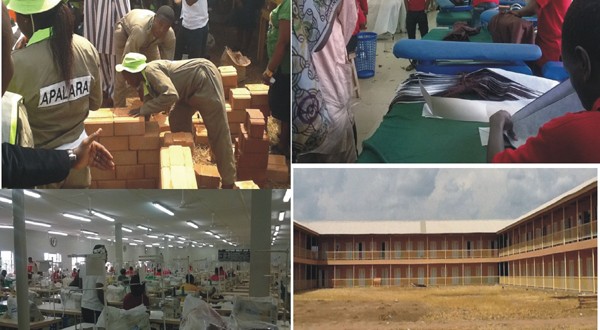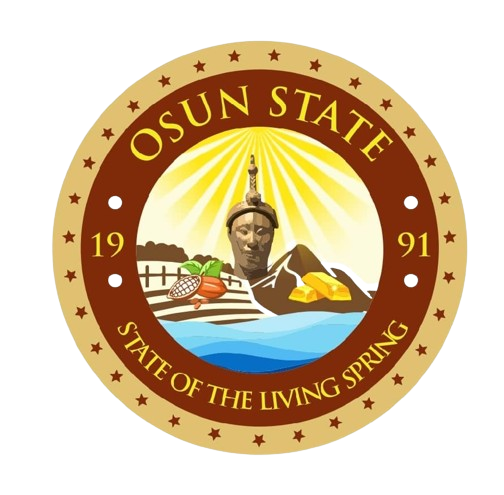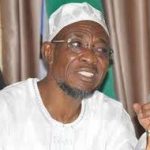
REPORT: The Making Of New Osun

The story of reinventing Osun State may well have started from poor and unflattering circumstances. Back in 2003, four years before he ran for governor of the state and seven before he was declared winner and sworn in, Ogbeni Rauf Aregbesola travelled round several communities in the state. What he saw did not lift his spirits. Old people, in most cases women in their late 60s and mid 70s, were surrounded by malnourished children.
This was a grim picture. Who were these kids? Most probably grandchildren left behind by their mothers in search of jobs and survival elsewhere.
It was at this point that the vision of a new Osun began to take shape. Something needed to be done to lift the people from the depths of poverty and despair. It would be a comprehensive approach. New jobs would be created, but more than that, the people needed to rediscover themselves and their worth. They also needed to be happy citizens of Osun once again. Collapsed infrastructure would be revived, nonexistent ones put in place. The uninspiring school system needed a new lease of life and parents must be encouraged to begin to send their children to school. The school infrastructure, nothing to write home about at that time, must be upgraded to make it as inspiring to both teachers and pupils as possible.
There was a plan for developing local technology, a clear vision for boosting the state economy and getting Osun citizens to give their best to the state and be happy working for the collective.
Aregbesola is said to have got to work, mobilising partners who would help work out a development plan for the state. One striking thing that came out of that plan was the Osun Green Book, which rallied the people to the awareness of their liberty and freedom to determine their own affairs.
Four years on, the picture of the new Osun has appeared and the people seem to like what they see. Considerable order has become part of the state. You can tell from the landscaping of the road as soon as you cross into the state end of the border, and also from the trees planted on both sides of the road.
“The landscaping makes for more pleasurable driving,” said Mr Adelowo Adewumi, Permanent Secretary, Ministry of Regional Planning and Special Duties.
That same pleasure and ease informed the policy of at least 10km of roads in each of the state’s 30 local government areas, in addition to one Area Office, added the permanent secretary. The road plan has helped to open up the rural areas, making it easier for farmers not just to access their farms but also to transport their produce to any market in the state. Residents of rustic, Ori-Oke prayer mountain community of Ikoyi also benefitted from the policy.
The focus on education is perhaps even more striking. In several towns, eye-catching schools with modern learning tools have replaced the dilapidated and off-putting facilities that used to exist in those places. Elementary schools enjoy this attention as much as do the middle and high schools. And Governor Aregbe-sola and his team are quick to point out that the postcard-perfect schools are not model facilities. They are the standard Osun schools, they say, adding that in time every school in the state will not only be a beauty to behold but will offer state-of-the-art learning and teaching aids.
“We went to Osun purposefully,” Aregbesola likes to say, adding, “The state was on the journey to perdition if the trend wasn’t stopped.”
That slide has been halted not only in schools where enrolment is perhaps the highest in the country, but also on the streets of towns and cities as well as villages in the state. Like every other state, unemployment was a big concern. Jobless young people fled the state in droves in search of jobs in such places as Lagos State. Those who stayed behind could only swallow hard and grind their teeth; in some cases, they were a problem to everybody.
The OYES, a youth jobs scheme, has considerably thinned down the mass of the unemployed in the state, helping to curb crime in tow. Tens of thousands of youths have been trained in skills and put to work, either directly employed by the state government or privately engaged. So many young people in the state across both sexes have been trained to control traffic or keep the streets tidy. Some women drive heavy-duty refuse trucks and are happy doing so. Some have been trained to make durable burnt bricks, some to raise fish, a good number to make garments.
The Omoluabi Garments Factory puts the fabric-making plan in great relief. There, hands and minds are at work on an array of sewing machines. The movement of workers from one point to another is constant.
Mr Oyedeji Abayomi, branch manager of the facility, said 3,500 garments are produced everyday at the factory. This is impressive.
Every month, the state makes N200m, Aregbesola said. His administration’s revenue policy should take the credit for that, especially the plan to source 60 per cent of every project locally, and to give 80 per cent of the work to locals. This prevents capital flight and boosts the local economy. Three different uniforms are used in Osun public schools. All the uniforms are sewn by Osun residents. This creates jobs for the locals and helps to retain revenue in the state.
You also find this approach at work at the Ayegbaju International Market, a sprawling facility boasting a bank, hospital, hotel, police and fire stations, and warehouses, among others, including a second-hand clothing section.
“2,500 people work at the market every day,” Dr Wale Bolorunduro, Commissioner of Finance, Economic Planning and Budget said as work at the market was rounded off preparatory to its inauguration.
Bolorunduro is happy that the market project, which is directly under his ministry, has kept to plan, and that the Aregbesola administration is delivering on its promises.
Just as happy is Mr Ajibola Basiru, Commissioner of Regional Integration and Special Duties, whose alma mater, one of the state’s primary schools, was given a new life in Aregbesola’s education plan. Basiru believes that the governor has done what he said he will do, and that Osun people are happy with him.
The state is touted as Nigeria’s seventh largest economy. In a few years, quality hotels are springing up in Osogbo, the capital. But one firm that is helping in growing the state economy is Rlg, a telecoms firm in Ilesha, specialising in repair and assembly of GSM phones and tablets. The firm, whose headquarters is in Ghana is in partnership with OYES, and has provided jobs to scores of Osun citizens.
Four years on, a new Osun is visible. Grandmas in the rural settings may heave a sigh of relief.
THE NATION


